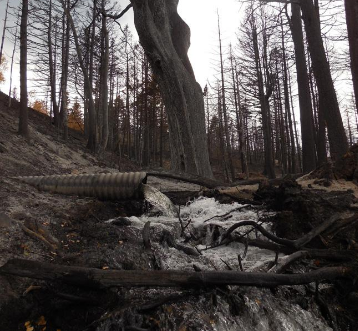From the Rocky Mountain Research Station:
High-intensity wildfires are one of the leading causes of severe soil erosion in western U.S. watersheds. This erosion can lead to disruptive deposits of sediment in reservoirs and water supply systems. For this reason, land managers can benefit from estimating the erosion potential of high-intensity wildfires in order to decide where to focus fuel reduction efforts.

